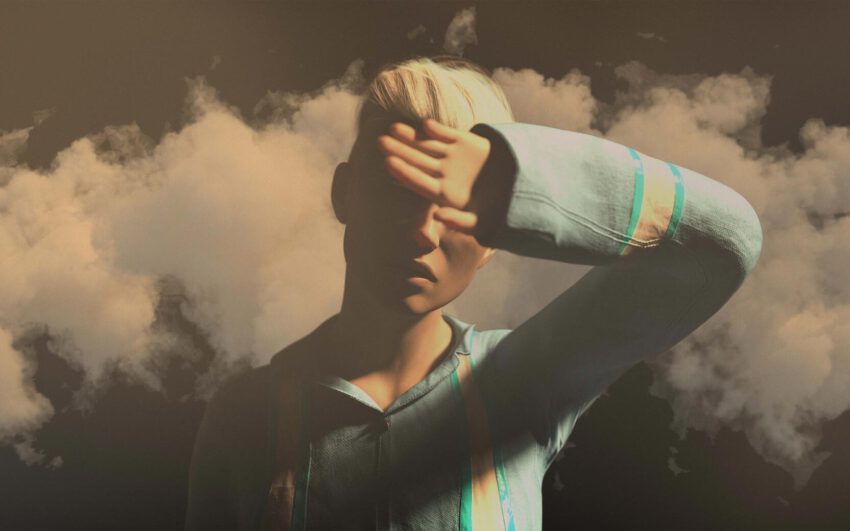The Sigrid and Franz Wojda collection is among the most renowned in the German-speaking world and focuses on reductive, conceptual, and analytical Austrian and international contemporary art. The Wojdas have amassed works by significant abstract and conceptual artists including US artist Robert Barry and German-born, US artist Josef Albers, in addition to works by the succeeding generation of international stars including François Morellet, Helmut Federle, Joseph Marioni, Bernard Frize, Günter Umberg, and Imi Knoebel in addition to works by Robert Zandvliet and Katharina Grosse. Another focal point of the collection are works by internationally known Austrian artists including Franz West, Heinz Gappmayr, Heimo Zobernig, Gerwald Rockenschaub, Ernst Caramelle, Brigitte Kowanz, Erwin Bohatsch, Helmut Scheibl, and Herbert Brandl. We met Franz Wojda in his apartment and asked him about the influence that minimalist art had had on him personally, the beginnings of their collection, and also about his recently published book on collecting contemporary art.
Mr. Wojda, your art collection attracts a great deal of attention. When and how did you become a collector?
My wife Sigrid and I have always been very interested in art. My wife grew up with art, and was often in the studio of her uncle, the painter Richard Knaus. She had the opportunity to study Italian art in Italy in the early 1960s and became familiar with contemporary tendencies in art there. I was very impressed by the Impressionists and Expressionists. At that time, Van Gogh was the greatest artist for me – he still is.
In 1963 I met my wife. She brought many art works from her parental home including works from her uncle into the marriage, which meant that our apartment was “furnished” with art from the beginning. The birth of our son was a turning point. One night we went out together and visited Studio Gerersdorfer. We were in a good mood, found the current exhibition enthralling, discovered a work that attracted our special attention, Wasserwelt I (Water World I) by Arnulf Rainer, and bought it. It was the first painting of our collection. During successive m onths we bought a few more paintings by Rainer.
In the 1970s, we continued to buy from this gallery with a certain regularity works by young Austrian artists who were upcoming at the time and are today well known, these include Eduard Angeli, Franz Ringl, Peter Pongratz, Robert Zeppl-Sperl, Alfred Hrdlicka, and Walter Pichler.
In the 1980s, I was in a financial position which enabled me to purchase art more frequently and I bought works by Gunter Damisch, Karl-Heinz Ströhle, Hubert Scheibl, Erwin Bohatsch, and Maria Lassnig. Later, in the 1990s, I added Heimo Zobernig, Gerwald Rockenschaub as well as Herbert Brandl, Jakob Gasteiger, and Rudi Stanzl.
How did it come about that in your collection you concentrated on minimalist, conceptual, and analytical art?
In 1994, my wife and I visited an exhibition of the art collection of Erste Bank, which has been established by Rosemarie Schwarzwälder and was managed by Edelbert Köb. This was a key experience.
This exhibition had a lasting impact on you and your collection. What was shown in that exhibition?
At the time, I was very busy and constantly traveling on business. Besides my professorship at the TU(Technical University) Vienna, I was the managing director of two management-consulting associations, functioned in several corporate supervisory bodies, and was on the executive board of several societies. I lived in an abundance that in the course of time began increasingly to overstrain me.
The international, minimalist, conceptual, and analytical art shown at that exhibition made me see that actually very little is needed and I decided to focus on the few and the significant and I also reorganized my professional situation accordingly. I gave up several positions and dedicated myself from then on more to art. Furthermore at that time, I became aware of parallels in my profession, in which extremely complex economic and social phenomena could become simplified by means of abstract models.
Since then, Sigrid and I have focused more and more on international art, which has positioned our collection completely anew. My wife has supported this 100 percent. At first we basically collected paintings, later we expanded the collection to include light objects and sculptures. That we have always collected sculpture to a more modest degree was due to our spatial situation. The intention to integrate our art into our concrete life situation was always a decisive point.

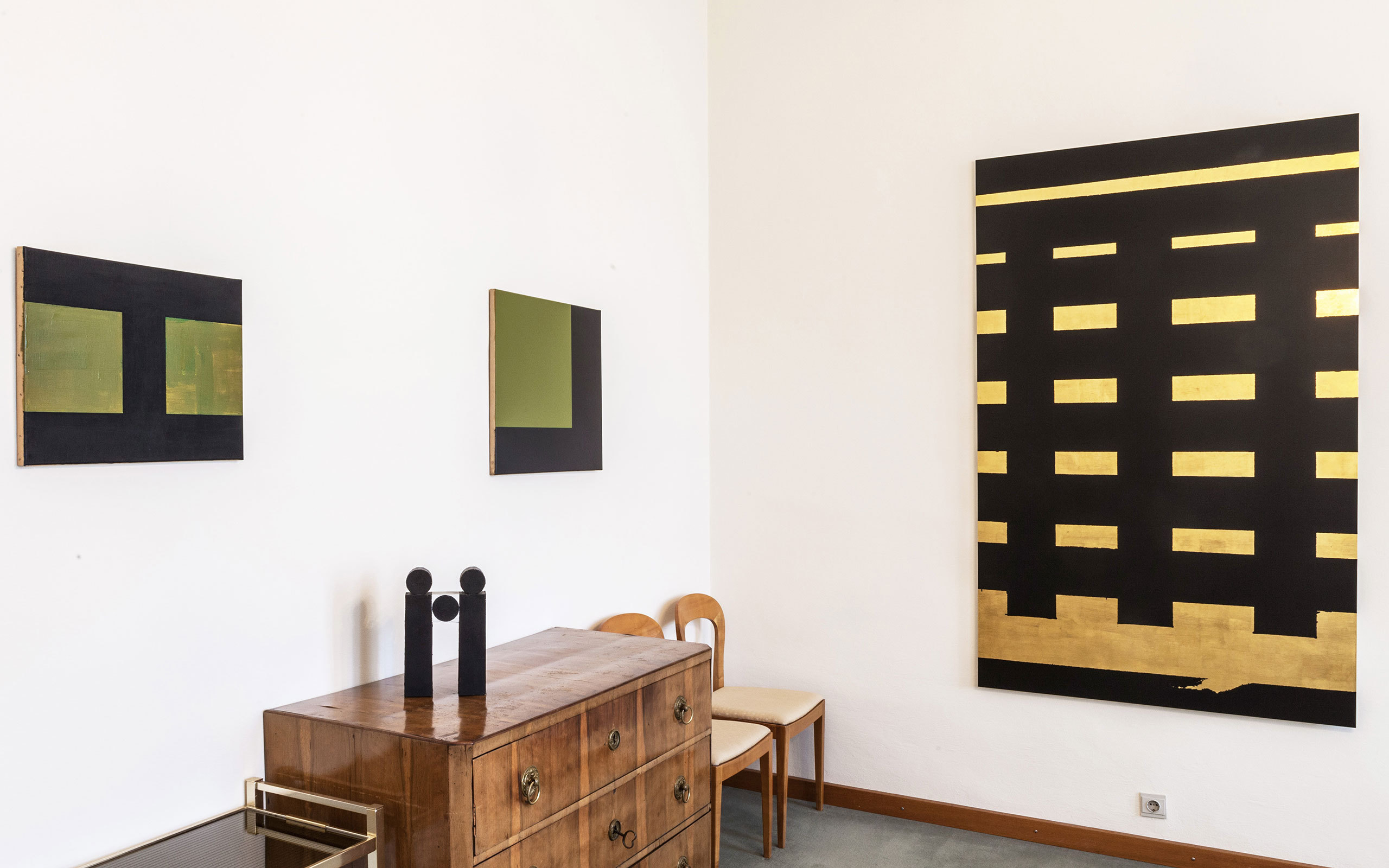
So it was always important to you to live with art? To just own and put it in storage was not enough for you?
Indeed, that was always very important to us. Even if we had some of the art in storage, it was to be easy accessible. To have art just stand around in bubble foil was never our intent.
We organized two exhibitions with the title Living with Contemporary Art, one of which took place in our Renaissance house in Kärnten after its renovation. Afterwards I thought that we could never hang our art works here because I was so excited about the architecture of the house. After some time, we did decide to organize an exhibition in the house. That was in 2003. The old doors and cabinets as well as the Renaissance period rooms have interacted well with works by Heimo Zobernig, Ernst Caramelle, and Brigitte Kowanz, Jessica Stockholder, Katharina Grosse, Josef Albers, and Robert Barry. It was a great success.
You could show your collection not only in your own rooms but also in museums.
Part of our collection was shown at the end of 2005 in the exhibition Entdecken und Besitzen. Einblicke in österreichische Privatsammlungen (Discover and Own. Insights into Austrian Private Collections) at Mumok in Vienna. A few years later, in 2012, we were able to present our collection in an exhibition at the Museum of Contemporary Art Kärnten, which was curated by Edelbert Köb and Christine Wetzliger-Grundnig. In that instance we were able to make use of the entire museum space.
For this show my wife and I had a model built to a scale of 1:20 and experimented with the hanging and installation of the works in our Vienna apartment although my wife was at that time already very sick, and unfortunately was unable to participate in the opening of the exhibition.
Is it not a strange feeling to loan the works that hang day after day in one’s own apartment to a museum?
No, in that case one substitutes the works on loan with other works in the apartment and realizes that these are also “quite good”! It is also an opportunity to hang something new.
Did you have advisors in regard to setting priorities in the collection or in regard to individual positions?
In a newspaper article my wife was once described as my “scout”, and that was an accurate description. I had very little time so she went to the galleries and informed herself about the artists and their works. In the 2000s, I was Chairman of the Council of the University for Applied Arts, Vienna and Vice Chairman of Mumok as well as member of the Friends of the Secession. Through these functions I have discovered a lot of new things in the arts and made good connections.
Furthermore, the suggestions of Edelbert Köb and Rosemarie Schwarzwälder have been very enriching to me as regards content and they have always advised me well. But Sigrid was also very knowledgeable. She was the principal selector of our art works.
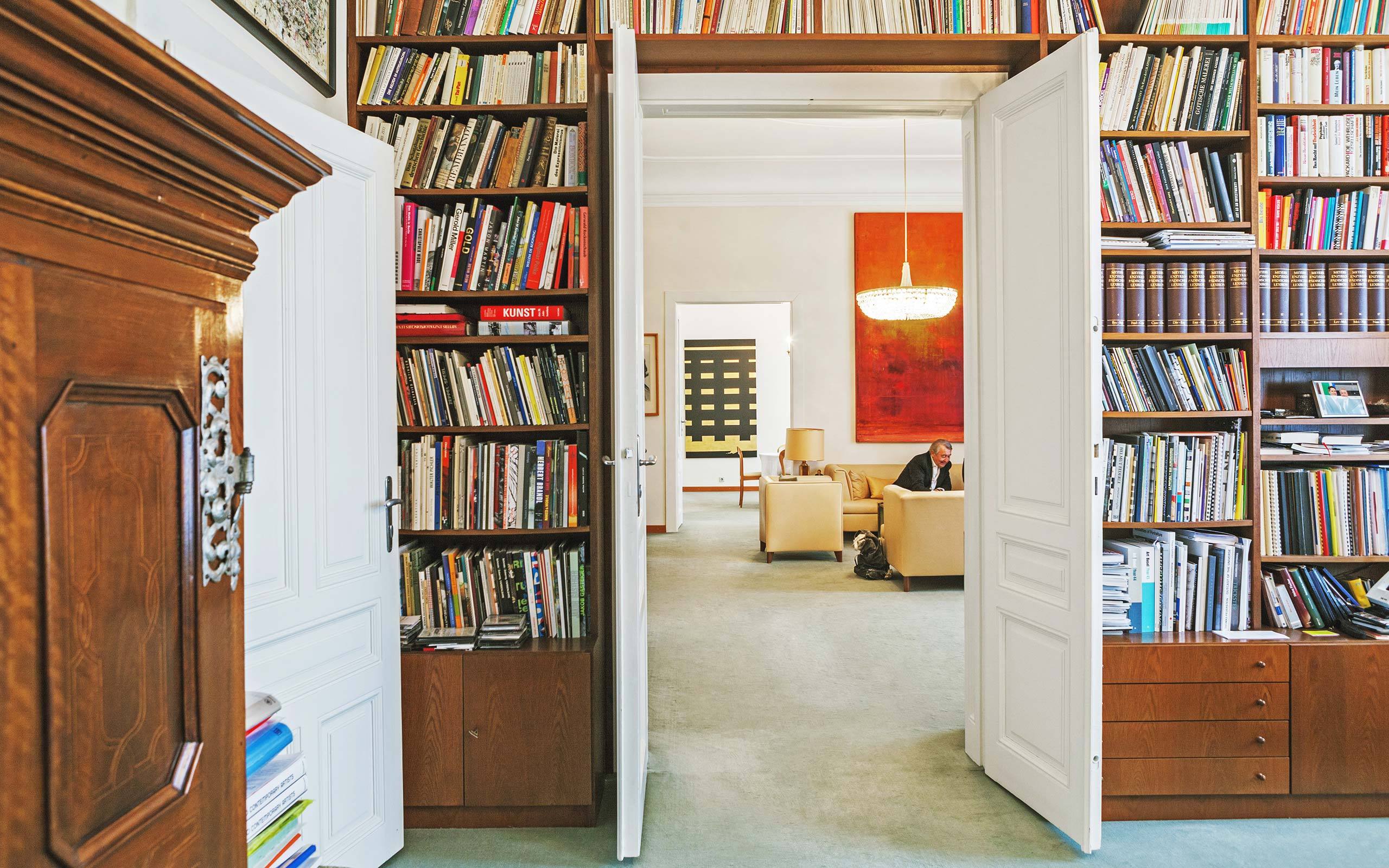


The art market has changed substantially in the past years. How do you see these developments?
I follow the large auctions in the auction houses only superficially. But I certainly watch the art market with great interest as far as it is possible for me to do so. I certainly attend art fairs frequently. For example, we have bought the first painting by the British artist Lucy Skaer that was sold on the continent at the Art Basel, on the Statements. This is an example of how we are often drawn to buy the work of very young artists.
Did the collectors, too, change with the art market?
There are very different ways of collecting. In the book, which I have just published, I developed a typology of collectors. In it I refer to the intentions pursued by various collectors such as ideals, materials, and social and/or cultural aims. In my book I have presented in detail seven basic types of collectors. There are further characteristics in which collectors vary, for example in awareness of quality, risk tolerance, and the degree of formalization in collecting. All of these aspects and questions play a role.
An available budget for buying art is certainly very essential. However, I show that one can build quite a remarkable collection even with a relative small budget. A high risk tolerance is necessary when purchasing young, new positions. In any case, it is very important to set a focus in a collection. I try to show young aspiring collectors that they can certainly begin collecting even with a modest budget.
One develops as a collector. In the course of time, the goals are accordingly reset. Initially we didn’t reflect on the value of an art work at all. At the time, emotions still played a major role. After a certain time it does become interesting to see how various art works develop financially. Collecting is something long-term, it has to be based on a strategy. Otherwise it becomes an accumulation of works but not a collection.
You have been collecting art for almost fifty years. Would you say that in the process you have also made mistakes?
For our means we have invested quite a bit annually in art and we have built a very remarkable collection. In hindsight, I have certainly made mistakes. From some artists who in the meantime have gained in value, I have unfortunately bought only a single work. Some positions we have overlooked or had not enough courage to acquire them. In the late 1990s, I could have bought a Gerhard Richter for 90.000 Swiss Francs. That was a lot of money at the time. Today this painting is valued at several millions. At the time I lacked the courage.
Do you have a favorite picture among your many art works?
No, I have no favorite painting. However, there are a few paintings or artists for which I have a higher affinity than others. In this room hang very many quite different pictures. Here, I am interested in their “interaction” and the “creation of tension” and less in the individual works!

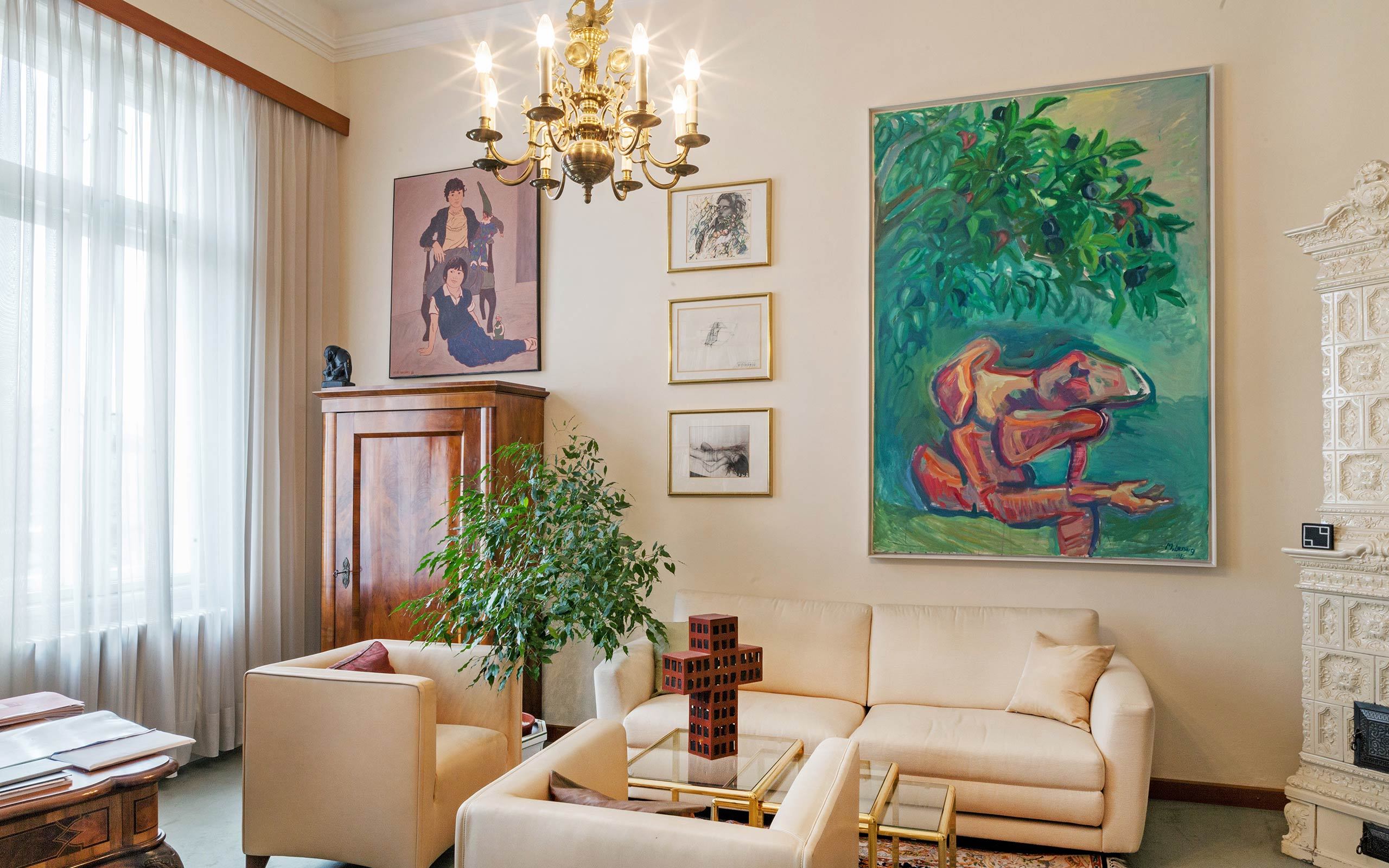
How important is the direct contact with the artists to you?
It is very important to me. At this time, I have become friends with many of the artists whose works are in my collection. It is a wonderful feeling to have acquired works when the artist was still young and unknown and whose work is now on exhibit in the pavilions of the Venice Biennale.
Can you give aspiring collectors any advice?
For the young collector, as a beginner, I would recommend that they start with works that they enjoy seeing every day and with which they love to live. In general the sense for good art can be obtained only through frequent and regular looking at art, the reading of specialist literature, and listening to and talking about art works and artists.
Your book Das Sammeln zeitgenössischer Kunst (The Collecting of Contemporary Art) has just been published. What are your next projects?
Now that the book is on the market I have decided, together with another collector, to systematically research the topic of “Digital Administration of Collections” for my own collection. My book already contains a chapter that gives a comprehensive overview of the applicable data to be taken into account in forming the individual requirements necessary to make an intelligent and economical account of one’s own information system.
And there are also loans to prepare for shows, as for instance for the exhibition Abstract Loop Austria – Kunst und visuelle Forschung seit 1950 (Abstract Loop Austria – Art and Visual Research Since 1950) at the Belvedere in Vienna in early 2016, when some works by Gerwald Rockenschaub and one by Gerald Miller from my collection will be presented. The scouting and finding of the “new”, now with a focus on CEE (Central and Eastern Europe), will be my future direction in collecting.
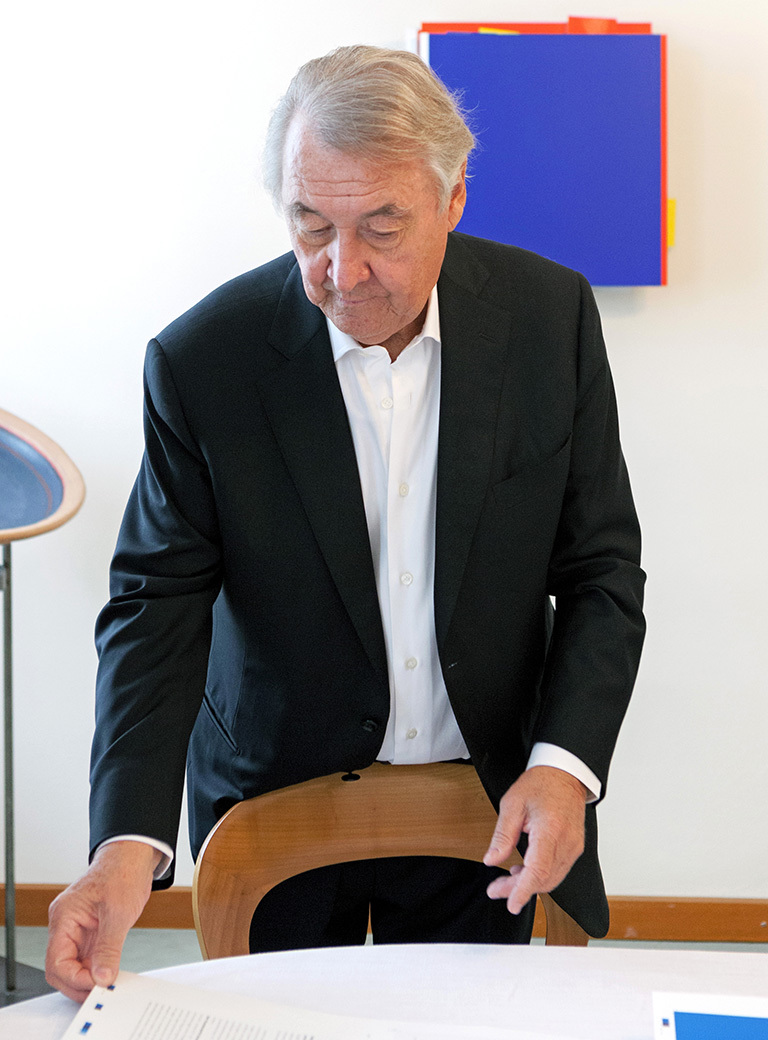
Interview: Michael Wuerges
Photos: Maximilian Pramatarov




